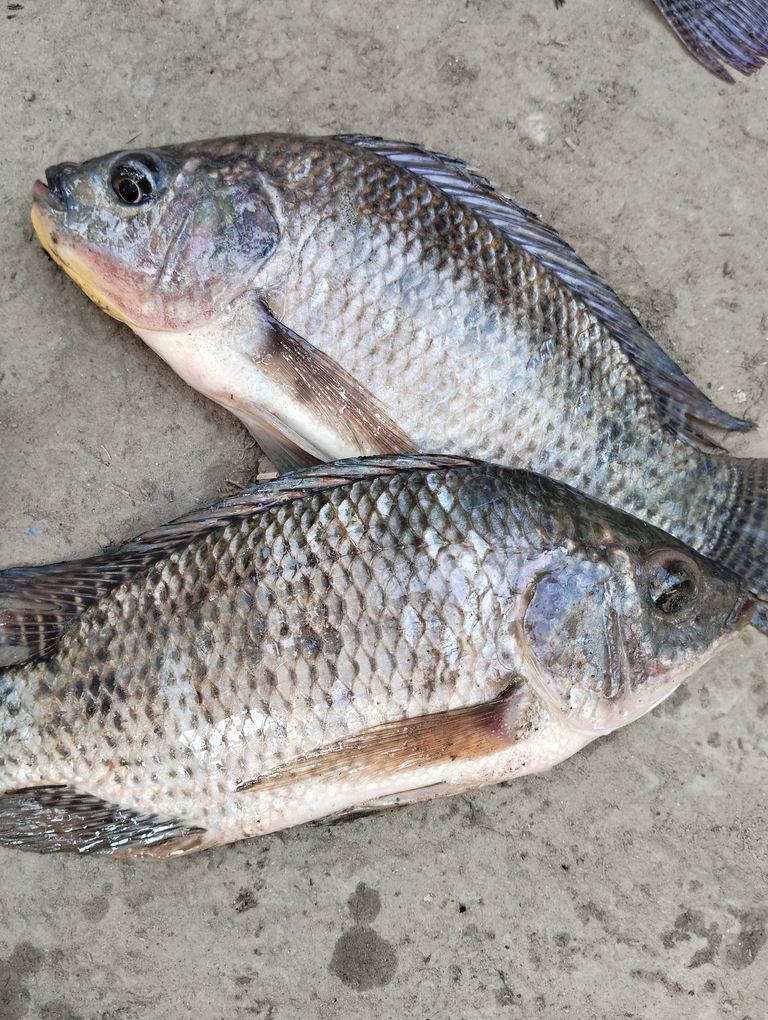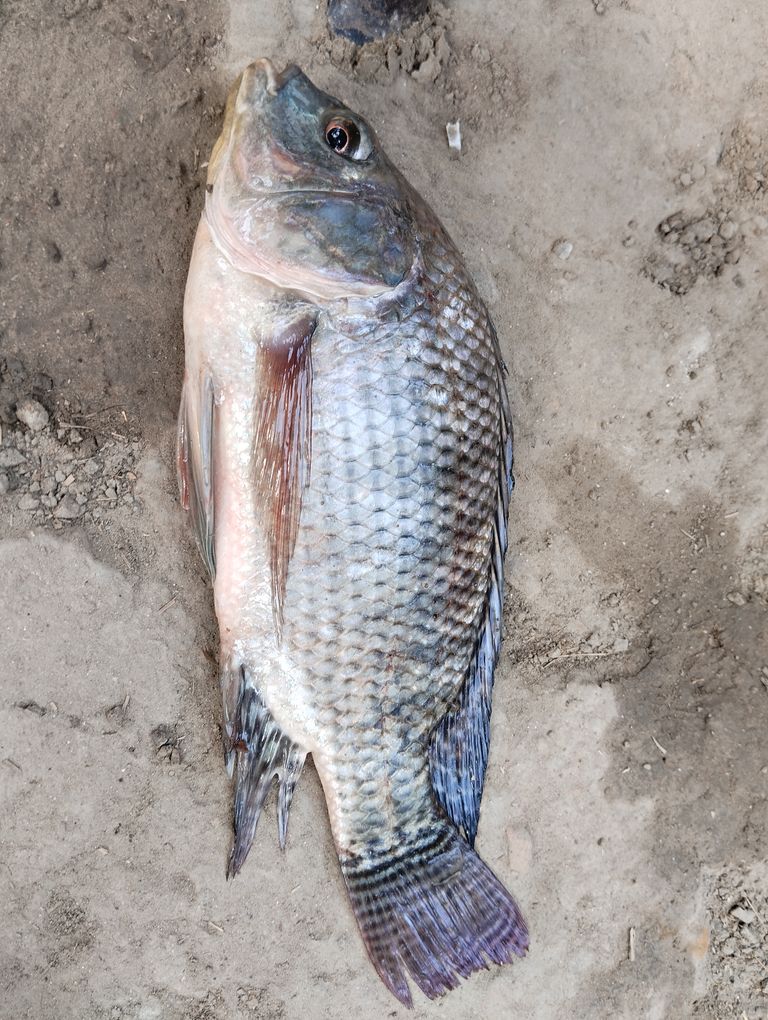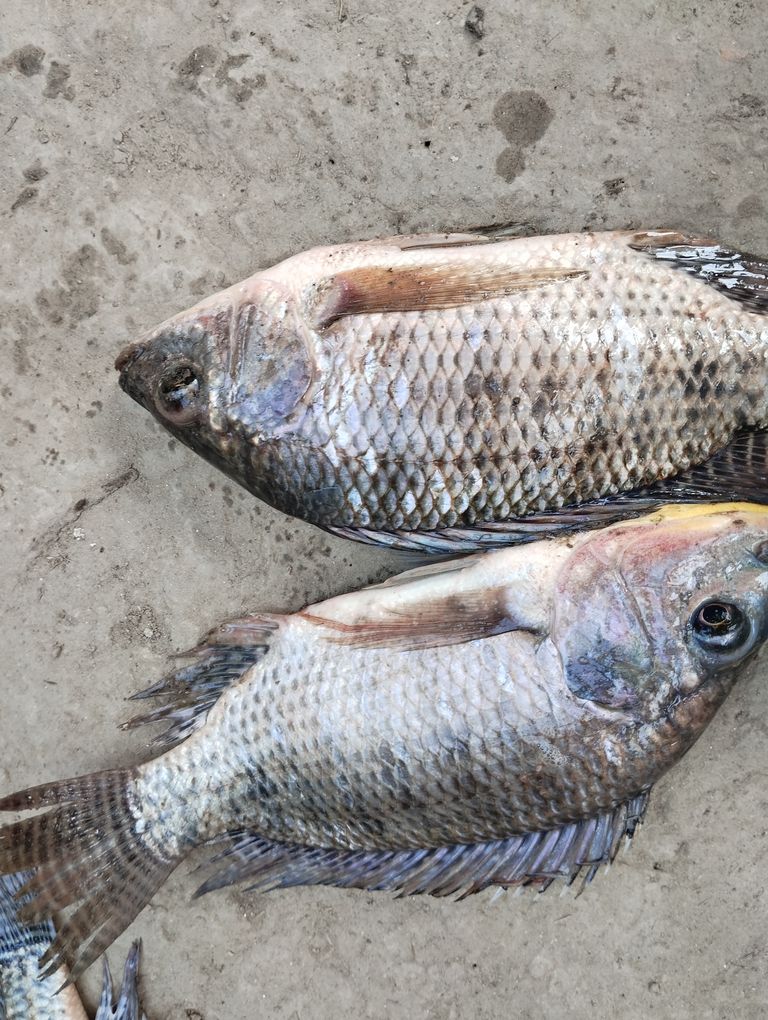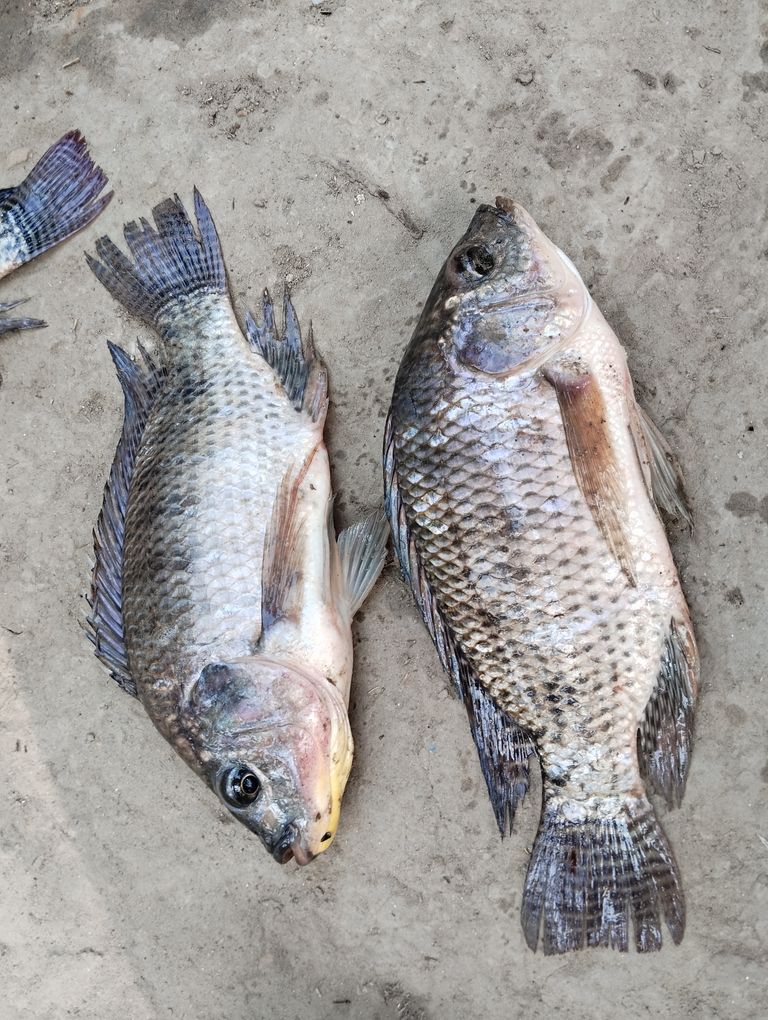
Comprehensive Guide to Tilapia Fish Farming.
Tilapia fish farming is one of the most profitable aquaculture businesses worldwide. Known for their adaptability and high demand, tilapia are a great choice for both beginner and experienced fish farmers. This blog will guide you through the essentials of starting a successful tilapia fish farming venture.
Why Choose Tilapia?
- Fast Growth Rate: Tilapia grow quickly and can reach market size within 6-8 months.
- High Market Demand: Known for its mild flavor, tilapia is widely consumed globally.
- Hardy Nature: Tilapia are resilient and can adapt to a variety of environmental conditions.
- High Feed Conversion Efficiency: They efficiently convert feed into body mass, making them cost-effective.
Starting a Tilapia Farm
- Select the Right Species
The most commonly farmed tilapia species are:
Nile Tilapia (Oreochromis niloticus): Preferred for its rapid growth and adaptability.
Blue Tilapia (Oreochromis aureus): Known for its cold resistance.
Mozambique Tilapia (Oreochromis mossambicus): Suitable for brackish water farming.
Choose the species based on your region’s climate and market demand.
- Farming Methods
There are several farming methods to consider:
Pond Farming: Suitable for large-scale production.
Tank or Cage Farming: Ideal for areas with limited space.
Recirculating Aquaculture Systems (RAS): An advanced method that allows year-round production.
- Site Selection
Choose a location with:
Access to clean water (pH 6.5-9).
Suitable temperature (25°C-30°C for optimal growth).
Adequate space for tanks, cages, or ponds.
Constructing the Farm
- Pond Design: Ensure the pond is 1.5-2 meters deep with proper drainage and aeration systems.
- Tank Setup: Use plastic or concrete tanks with aerators and filters for water quality management.
- Cages: Construct cages using sturdy materials like bamboo or PVC pipes and netting.
Stocking Tilapia
Use fingerlings from reputable hatcheries.
Stock 2-3 fish per square meter to prevent overcrowding.
Ensure uniform size to reduce cannibalism among fish.
Feeding Tilapia
- Feed Type: Use commercial pelleted feed containing 25-30% protein for optimal growth.
- Feeding Schedule: Feed 2-3 times a day.
- Supplemental Feeding: Include natural feeds like algae, duckweed, or kitchen waste.
Water Quality Management
Monitor temperature, pH, and dissolved oxygen levels regularly.
Replace 10-20% of water weekly to maintain quality.
Install aerators to ensure proper oxygen levels.
Disease Management
Common diseases include:
Bacterial Infections: Treat with antibiotics and maintain hygiene.
Parasitic Infections: Use appropriate chemicals to control outbreaks.
Fungal Diseases: Prevent by maintaining water quality.
Regularly inspect fish for signs of illness and consult an aquaculture expert if needed.
Harvesting Tilapia
Harvest tilapia when they reach 500-800 grams, the ideal market size.
Use nets or drain the pond for easy collection.
Marketing Tilapia
- Local Markets: Sell fresh fish to nearby markets or restaurants.
- Processing Units: Partner with companies for frozen or processed tilapia.
- Export Opportunities: Explore export markets with high demand for tilapia.
Profitability of Tilapia Farming
Tilapia farming can yield significant profits due to:
Low production costs.
High demand and good market prices.
Year-round farming potential in suitable conditions.
Final Tips for Success
Start small and expand gradually.
Stay updated on the latest aquaculture technologies.
Build strong networks with buyers and suppliers.
With proper planning and management, tilapia farming can be a rewarding and sustainable business.

A Comprehensive Guide to Tilapia Fish Varieties
Tilapia is one of the most popular and widely farmed fish globally. Its rapid growth, adaptability to various water conditions, and mild, flavorful taste have made it a preferred choice among fish farmers and consumers alike. This blog delves into the different varieties of tilapia, their characteristics, and their significance in aquaculture.
- Overview of Tilapia
Tilapia belongs to the cichlid family, which comprises several species of freshwater fish. Native to Africa and the Middle East, tilapia has spread globally due to its adaptability and economic value. Known as "aquatic chickens," these fish are highly versatile, thriving in various environments and producing high yields in aquaculture systems.
- Major Tilapia Varieties
There are several species of tilapia, but the following are the most commercially significant:
a. Nile Tilapia (Oreochromis niloticus)
Origin: Native to Africa's Nile River Basin.
Features: Fast growth rate, excellent feed conversion efficiency, and tolerance to a wide range of water conditions.
Usage: Most widely farmed species globally, known for its mild taste and firm texture.
Popularity: Accounts for over 70% of global tilapia production.
b. Mozambique Tilapia (Oreochromis mossambicus)
Origin: Found in southern Africa.
Features: Tolerant to brackish and saltwater environments, though slower-growing compared to Nile tilapia.
Usage: Used in hybridization programs to improve disease resistance and salinity tolerance.
Drawbacks: Less favored due to its slower growth and lower productivity.
c. Blue Tilapia (Oreochromis aureus)
Origin: Native to North and West Africa, and the Middle East.
Features: High salinity tolerance and adaptability to colder temperatures.
Usage: Ideal for hybridization and aquaculture in non-tropical regions.
Market: Popular in the United States and other temperate regions.
d. Red Tilapia
Origin: A hybrid species developed through selective breeding.
Features: Reddish-pink hue, attractive to consumers.
Usage: Valued in premium markets for its aesthetic appeal.
Growth: Comparable to Nile tilapia in performance, with similar adaptability.
- Hybrid Tilapia
Hybrid tilapia varieties are bred to combine desirable traits like faster growth, disease resistance, and environmental adaptability. For instance, crosses between Nile and Mozambique tilapia have resulted in hybrids that perform better in brackish water.
- Importance of Tilapia in Aquaculture
a. Economic Benefits
Tilapia farming is cost-effective, offering high yields with low feed-to-growth ratios. Its demand continues to grow due to its affordability and versatility in various cuisines.
b. Environmental Adaptability
Tilapia can thrive in diverse environments, from freshwater to brackish water systems. This makes them ideal for aquaculture in regions with limited resources.
c. Nutritional Value
Tilapia is a rich source of protein, low in fat, and contains essential nutrients like omega-3 fatty acids, vitamins, and minerals.
- Challenges in Tilapia Farming
While tilapia farming offers numerous advantages, it also has challenges:
Overbreeding: Can lead to overcrowding and stunted growth.
Environmental Concerns: Invasive species can disrupt local ecosystems.
Disease Management: Requires careful monitoring and preventive measures.
- Future of Tilapia Farming
Innovations in breeding, feed formulations, and water management are expected to enhance tilapia farming's efficiency and sustainability. With growing global demand for affordable and nutritious protein sources, tilapia will likely play a crucial role in meeting these needs.
Conclusion
Tilapia's adaptability, economic value, and nutritional benefits make it a cornerstone of global aquaculture. Understanding the various tilapia species and their characteristics helps fish farmers optimize their farming practices and cater to diverse market demands. Whether you're a consumer or a producer, tilapia continues to be a fish worth investing in.

Common Diseases in Tilapia Fish and Their Management
Tilapia is one of the most widely farmed fish species due to its fast growth, adaptability, and high market demand. However, like any aquaculture species, tilapia is susceptible to various diseases that can significantly impact productivity. Understanding these diseases, their symptoms, and management strategies is crucial for ensuring a healthy fish population and successful aquaculture operations.
Common Diseases in Tilapia
- Bacterial Infections
Bacterial diseases are among the most common problems in tilapia farming. They typically arise from poor water quality, overstocking, or stress.
Streptococcosis: Caused by Streptococcus bacteria, this disease leads to symptoms such as erratic swimming, bulging eyes (exophthalmia), and skin hemorrhages. Infected fish may also display a loss of appetite and lethargy.
Aeromonas Infections: Aeromonas bacteria cause ulcers, fin rot, and swollen bellies. Fish infected with Aeromonas may show reddish sores or lesions on their bodies.
- Parasitic Infections
Parasites can severely affect tilapia's health and growth. These infections often result from introducing infected fish or poor sanitation practices.
Ichthyophthirius multifiliis (Ich): Commonly known as "white spot disease," this parasite causes white cysts on the skin, gills, and fins. It often leads to respiratory distress and excessive mucus production.
Monogenean Flukes: These parasites attach to the gills or skin, causing irritation, excessive mucus secretion, and impaired breathing.
- Fungal Diseases
Fungal infections often occur when fish are stressed or injured. Poor water quality or handling practices can exacerbate these issues.
Saprolegniasis: This fungal infection appears as cotton-like growths on the skin, gills, or fins. It often occurs in fish that are already weakened by other diseases or stressors.
- Viral Diseases
Although less common, viral infections can devastate tilapia farms.
Tilapia Lake Virus (TiLV): This emerging virus causes high mortality rates and presents symptoms such as skin discoloration, abdominal swelling, and lethargy. TiLV is highly contagious and can spread rapidly in a farm.
- Nutritional Deficiencies
Poor or imbalanced diets can lead to various health issues in tilapia.
Vitamin C Deficiency: Results in skeletal deformities, poor growth, and weakened immune responses.
Zinc Deficiency: Causes fin erosion and reduced appetite.
Causes of Disease in Tilapia
Several factors contribute to disease outbreaks in tilapia farms:
Poor Water Quality: High ammonia or nitrite levels, low dissolved oxygen, or incorrect pH can stress fish, making them more susceptible to diseases.
Overcrowding: Overstocking increases stress levels and facilitates the rapid spread of infections.
Improper Handling: Rough handling during transport or grading can cause injuries, increasing the risk of infections.
Poor Nutrition: A diet lacking essential nutrients weakens the fish's immune system.
Disease Management Strategies
- Preventive Measures
Maintain optimal water quality by regularly monitoring temperature, pH, dissolved oxygen, and ammonia levels.
Avoid overstocking and ensure adequate space for each fish.
Use high-quality feeds rich in essential nutrients to boost immunity.
Quarantine new fish for at least 2-4 weeks before introducing them to the main pond.
- Treatment Options
For Bacterial Infections: Use antibiotics like oxytetracycline or enrofloxacin under veterinary guidance. Ensure proper dosage to avoid resistance.
For Parasitic Infections: Treat affected ponds with formalin, potassium permanganate, or salt baths, depending on the severity of the infestation.
For Fungal Diseases: Apply antifungal treatments such as malachite green or methylene blue. Ensure that the underlying causes, such as injuries, are addressed.
For Viral Diseases: Since specific treatments for viral infections are limited, focus on preventive measures like biosecurity and vaccination (if available).
- Biosecurity Practices
Regularly disinfect farming equipment and facilities.
Limit access to ponds to authorized personnel to prevent contamination.
Dispose of dead fish properly to avoid spreading pathogens.
- Monitoring and Early Detection
Observe fish daily for signs of abnormal behavior, lesions, or discoloration.
Regularly conduct health checks, including sampling fish for laboratory testing.
Managing diseases in tilapia farms requires a proactive approach, combining preventive measures, regular monitoring, and timely interventions. By maintaining good water quality, providing proper nutrition, and adhering to biosecurity protocols, farmers can minimize disease outbreaks and ensure a sustainable and profitable aquaculture operation. Remember, early detection and action are key to preventing significant losses.

How to Prepare Tilapia Fry: A Comprehensive Guide
Tilapia is a highly popular freshwater fish, prized for its fast growth, easy maintenance, and adaptability. Preparing tilapia fry (baby fish) is essential for fish farming, as it ensures a steady supply of quality fish stock. Here’s a step-by-step guide to producing tilapia fry:
- Understanding Tilapia Breeding
Tilapia is a prolific breeder and thrives in controlled environments. They are mouthbrooders, meaning the female holds the eggs and larvae in her mouth for protection until they are free-swimming. Creating the right conditions is key for successful breeding.
- Choosing the Right Broodstock
Selecting healthy broodstock ensures high-quality fry production.
Age and Size: Use mature tilapia, typically 5–6 months old and weighing around 150–200 grams.
Health: Ensure the broodstock is free from diseases and deformities.
Gender Ratio: Maintain a male-to-female ratio of 1:3 for optimal breeding.
- Setting Up the Breeding Tank or Pond
The breeding environment plays a critical role in fry production.
Size: Use tanks or ponds with a depth of 1–1.5 meters.
Water Quality: Maintain a pH of 6.5–8.5 and a temperature of 27–30°C for optimal breeding conditions.
Substrate: Provide sandy or muddy bottoms for the female to lay eggs.
Aeration: Ensure proper aeration to maintain oxygen levels.
- Feeding the Broodstock
Feed the broodstock with high-protein diets to enhance reproduction.
Diet: Use commercial fish feed containing 30–35% protein. Supplement with natural feeds like plankton or vegetable matter.
Frequency: Feed twice a day, ensuring no overfeeding.
- Spawning Process
Observation: Monitor the females for signs of spawning, such as creating nests or carrying eggs in their mouths.
Duration: The spawning process lasts for about 3–5 days.
Egg Incubation: The female incubates the eggs in her mouth for 5–10 days until they hatch.
- Collecting the Fry
Once the fry become free-swimming, they need to be collected and moved to a nursery.
Timing: Collect fry 10–14 days after hatching.
Technique: Use fine mesh nets to gently scoop the fry without harming them.
- Nursery Management
Stocking Density: Stock the fry at a density of 100–200 per square meter.
Water Quality: Maintain clean water and ensure proper aeration.
Feeding: Provide finely powdered feed or commercially available fry feed 3–4 times a day.
- Hormonal Treatment for Monosex Fry (Optional)
To ensure higher growth rates and uniform size, many farmers opt for hormonal treatment to produce all-male tilapia fry.
Hormone Use: Use 17-alpha-methyltestosterone (MT) in feed.
Duration: Treat the fry for 21–28 days.
Caution: Follow local regulations and handle hormones responsibly.
- Preventing Diseases
Hygiene: Regularly clean tanks or ponds to prevent infections.
Monitoring: Check for signs of diseases like fungal infections or deformities.
Treatment: Use recommended medications or consult a fish health expert if needed.
- Growing the Fry to Juveniles
After 4–6 weeks in the nursery, the fry will grow into juveniles (weighing 10–20 grams) and can be transferred to grow-out ponds for further cultivation.
Producing tilapia fry requires careful planning, proper setup, and consistent monitoring. By following these steps, fish farmers can ensure high survival rates and a steady supply of quality tilapia fry. With efficient fry production, tilapia farming becomes a profitable and sustainable venture.
If you are a beginner, start small to understand the process better, and gradually expand as you gain experience. Tilapia farming is not only lucrative but also a step towards sustainable aquaculture.